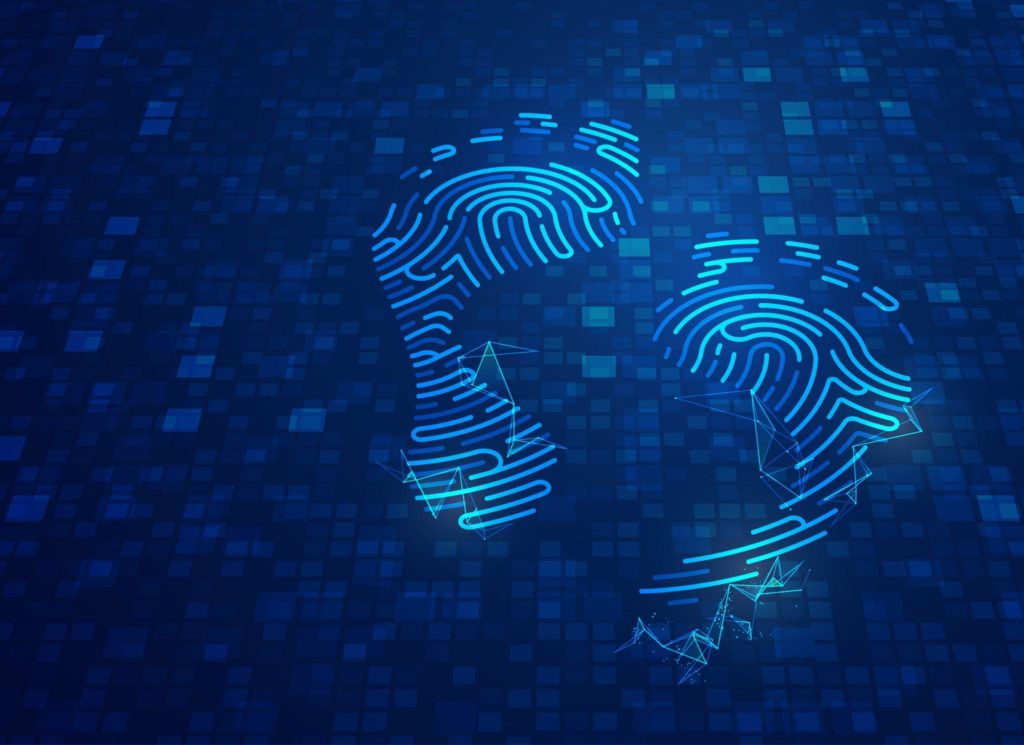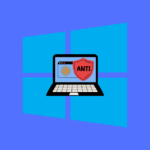Each click, every search, and all our posts lead us through the vast digital cosmos, creating trails, a compilation of digital footsteps that tell our tale.
This story is visible to search engines, social media platforms, and even potential employers who might be doing a little digital detective work.
But what is this trail, exactly? And what does it say about us?
In this article, we’re going to unravel the concept of “What’s a Digital Footprint” and explore its significance in your online journey. It’s time to step into the virtual spotlight and understand the indelible tracks we leave in the sands of the digital desert.
Table of Contents
Understanding Digital Footprint
A digital footprint is the trail of data you leave when using the internet. This data can include websites you visit, emails you send, and information you submit online.
It serves as a record of your online activities and acts as an impression of your identity, even when you’re offline.
To better understand digital footprints, let’s explore the two types: active and passive.
Active Digital Footprint
Your active digital footprint consists of information you consciously share online. This can involve posting on social media, sending emails, or filling out online forms.
Essentially, these actions reflect data you intentionally create and make available to others on the internet.
Passive Digital Footprint
On the other hand, a passive digital footprint is generated without your direct knowledge or consent. This can include data collected through website visits, IP addresses, browsing patterns, and even shares of your social media content.
Companies often use cookies and tracking tools to gather this type of information, sometimes without your permission. Passive digital footprints can be more dangerous, as you may never be aware of their creation.
To protect your digital identity and maintain a positive online presence, it’s crucial to understand the difference between active and passive digital footprints. By doing so, you can make informed decisions about the information you choose to share and the possible consequences it may have in the digital world, especially any potential impact to your digital reputation.

Online Activities and Tracking
Browsing History and Cookies
When you browse the internet, one way your online activities are recorded is through the use of cookies. These cookies are small files on your computer or other device that websites store whenever you visit. They help websites remember your preferences and track your behavior to display personalized content.
Your browsing history is another aspect of your digital footprint, as it provides a record of the websites you’ve visited. This history can be used by websites to track your activity and create a detailed portrait of your online behavior.
IP Address and Devices
Your IP address also plays a significant role in creating your digital footprint. An IP address is a unique identifier assigned to your internet-connected devices, such as your computer, smartphone, or tablet.
Websites and online services can track your IP address to determine your location and keep a record of your online activities.
Similarly, the devices you use can also contribute to your digital footprint. The use of various devices, including smartphones, laptops, tablets, and even wearable technology, can create a comprehensive picture of your time spent online.
Impact on Personal and Professional Life
Employers and Companies
Employers and companies are becoming increasingly aware of the importance of a person’s digital footprint, particularly when it comes to recruitment and professional opportunities. Many companies now use search results and social media profiles as a means of vetting potential candidates during the hiring process.
To make a positive impression on future employers, it’s essential to maintain a well-rounded and professional online presence. This can be achieved by:
- Regularly updating your profiles on social media and professional networks
- Tailoring your privacy settings to control what information is publicly displayed
- Avoid posting inappropriate or controversial content that may potentially harm your online reputation
- Engaging in meaningful online conversations and contributing to communities related to your profession or interests.
Your digital footprint can also indirectly impact your career by affecting the reputation of the company you work for as well. Businesses who employ individuals with strong personal brands or a substantial following on social media may benefit from these connections and the additional reach they bring.
Your digital footprint can create opportunities or impose limits, in both your personal and professional life, based on how you manage your online presence. Always remember to be mindful of what you share and the impact it may have on yourself and the organizations you are associated with too.
Managing Your Digital Footprint
Adjusting Privacy Settings
Take control of your digital footprint by making sure you adjust your privacy settings on apps and devices. Regularly review and update your settings to ensure your personal data is only visible to those you want to have access to it.
For example, on social media platforms, customize who can see your posts. On smartphones, adjust app permissions to limit data sharing.
Using VPNs
A Virtual Private Network (VPN) can help protect your privacy and minimize your digital footprint by encrypting your internet connection. When you use a VPN, it masks your IP address, making it more difficult for third parties to track your online activities.
Consider using a reliable VPN service to secure your digital presence on public Wi-Fi networks as well as your home or office internet connection.
Secure Browsers
Finally, consider using secure browsers that focus on privacy and minimizing your digital footprint. These browsers may block tracking cookies, limit data collection, and come with built-in privacy features.
By making the switch to a secure browser, you can better manage the information you leave behind while surfing the internet.
Data Breaches and Online Security
As a frequent internet user, it’s important to be aware of the potential risks associated with data breaches and online security.
In this section, we will discuss two common threats: phishing and cybercriminals, as well as securing passwords and login information.
Phishing and Cybercriminals
Phishing is a deceptive technique used by cybercriminals to trick you into divulging sensitive information, such as passwords or credit card numbers.
They often do this by posing as legitimate companies or organizations, sending you emails or presenting fake websites that appear genuine.
Remember, when shopping online, be cautious of unsolicited emails and links, as they may be a part of a phishing scam.
Additionally, be aware that hackers can exploit data breaches to gain access to your personal information.
To protect yourself, always verify the legitimacy of any communication and avoid sharing sensitive information through unsecured channels.
Securing Passwords and Login Information
Your passwords play a crucial role in safeguarding your online presence. To secure your login information, follow these best practices:
- Create strong passwords: Use a combination of upper and lower case letters, numbers, and special characters. Avoid using easily guessable information, such as your name, birth date, or common words.
- Use unique passwords for different accounts: By doing this, if one account is compromised, the others remain secure.
- Change your passwords regularly: Update your passwords every few months to reduce the risk of unauthorized access.
- Enable multi-factor authentication: This additional layer of security requires more than just a password to access your account, making it more difficult for hackers to gain access.
- Don’t store passwords in plain text: Use a secure password manager to save your passwords, rather than writing them down or storing them in an unsecured document.
By following these guidelines, you can protect your digital footprint from cybercriminals and minimize the risk of data breaches.
Remain vigilant in your online activities and secure your passwords and login information to maintain your online safety.

Digital Shadows: Unintended Traces
Search Engines and Newsletters
When you use the internet, like browsing or sending emails, you leave a digital mark.
Search engines make this mark bigger. They remember what you search, click, or see, and then show you more of the same.
Emails add to this mark too. Signing up for newsletters or emailing companies means they learn about what you like. They might accidentally share or leak this info.
So, be picky about what newsletters you join and who you email to keep your digital mark smaller.
Subscriptions and Reviews
Every time you join an online group or sign up for something, you leave a digital mark. This mark gets bigger when you give out personal info. Think about who you’re giving this info to and if they’ll keep it safe.
When you post stuff online or leave reviews, you’re also adding to this mark. This can tell people a lot about you. If you don’t want a big digital mark, be careful what you share.
In short, the more you do online, the bigger your digital mark gets. Choose wisely what you sign up for and post about. Think about the digital tracks you leave and try to be smart about it.
Positive and Negative Digital Footprints
Promoting a Positive Online Image
A positive digital footprint is crucial in today’s online world. It’s essential to be conscious of your social media posts, comments, and the information you share through online forms.
Here are a few tips to create and maintain a positive digital footprint:
- Regularly review your online profiles and update them to ensure they accurately represent your current interests and accomplishments.
- Use privacy settings wisely, but keep in mind that nothing is truly private online.
- Be proactive in creating content that reflects a positive self-image, such as posting about your achievements, sharing insightful articles, or engaging in online discussions.
- Remain mindful of the tone and language used in your online communication.
- Think before you post or comment, and consider the potential consequences of sharing personal or controversial information.
Avoiding Negative Consequences
A negative digital footprint can have far-reaching consequences, affecting your personal and professional life.
This includes damaging your reputation, causing emotional distress, or even impacting your career prospects.
To mitigate these risks and protect your online image, consider the following guidelines:
- Avoid posting offensive, derogatory, or discriminatory content.
- Think twice before sharing personal or sensitive information, as these can be used against you or others.
- Keep track of the accounts and platforms you’re using and delete any inactive or outdated profiles.
- Be cautious when filling out online forms or engaging with unfamiliar websites.
- Set up alerts on your name to be aware of any content that might be harmful to your image.
By being aware of the potential positive and negative aspects of your digital footprint, you can ensure that your online presence works in your favor rather than against you.
Digital Footprint and Identity Theft
Data Brokers and Online Privacy
This footprint can be used to track your online activities and devices. Data brokers collect your digital footprint, which includes your online identity, interests, and habits, and sell it to third-party companies for advertising purposes. This can also lead to potential identity theft.
Want to remove your data from the hands of data brokers? We recommend a service called DeleteMyTrace.com that allows you to remove your info from these databases.
Protecting your online privacy and making it difficult for data brokers to collect sensitive information about you will contribute to a safer internet experience.
Emerging Technologies and Digital Footprints
As technology advances, new devices and platforms are increasingly interconnected, leading to a more intertwined digital footprint.
In this section, we will explore the impact of emerging technologies on your digital footprints, specifically focusing on Biometric Data and Sensory Devices and Virtual and Augmented Realities.
Biometric Data and Sensory Devices
With the advent of fitness trackers and smartwatches, personal health information is being collected and analyzed like never before. These devices track your heart rate, steps, sleep patterns, and more, contributing significantly to your digital footprint. It’s essential for you to be aware of how this data is being used and safeguard your privacy.
To protect your biometric and sensor data, consider using a virtual private network (VPN) to encrypt your online activities. VPNs mask your digital presence, making it difficult for third parties to access your personal information.
Also, regularly review permissions granted to apps and devices that collect your health information—make sure they only access necessary data and ensure they handle your personal details securely.
What’s a Digital Footprint FAQs
What is an example of a digital footprint?
A digital footprint can be something as simple as a social media post or a comment on a blog. It could also be more significant, like an online purchase or a registration on a website. These actions leave traces of information about you in the digital space, which collectively form your digital footprint.
What are the 4 types of digital footprint?
Digital footprints can be categorized into active and passive footprints, and each of these can be further divided into personal and professional footprints. Active footprints are left when you intentionally share information online, like posting on social media. Passive footprints are left without you actively participating, like cookies on a website. Personal footprints pertain to your individual or private life, while professional footprints are tied to your career or professional activities.
Can you erase your digital footprint?
Completely erasing your digital footprint can be challenging due to the interconnected nature of the internet and the persistence of data. However, you can take steps to minimize it, such as deleting old social media posts, deactivating unused accounts, or using privacy tools like VPNs. Regularly checking your privacy settings on online platforms can also help control the information you leave behind.
How do I know if I have a digital footprint?
If you’ve ever used the internet, you have a digital footprint. It’s as simple as that. Every online activity from web searches, social media interaction, emails, app usage, to online shopping leaves traces that form your digital footprint. To get an idea of what your digital footprint looks like, you can Google your name, email addresses, or usernames that you’ve used online. This can give you an idea of what information about you is publicly accessible.
As we tread the vast terrain of the digital world, it’s crucial to remember that our actions, big or small, leave behind a digital footprint.
Understanding “What’s a Digital Footprint?” is not just about learning a new term; it’s about acknowledging and managing the lasting impact of our online actions.
Remember, every search, like, share, and post contributes to your digital narrative.
Being mindful of this digital trail empowers us to make informed decisions, safeguard our privacy, and build a respectful online presence.
As we continue to explore the nuances of internet privacy at PrivacyDefend.com, we hope to equip you with the knowledge and tools to navigate this digital landscape wisely and securely.
Stay tuned, stay aware, and keep leaving positive digital footprints.
- Amazon Email Phishing: How to Identify and Avoid Scams - May 11, 2025
- Malwarebytes vs McAfee: Decoding the Ultimate Antivirus Battle - May 11, 2025
- Best Antivirus for Windows 10: Expert Recommendations for 2023 - May 11, 2025










4 thoughts on “What’s a Digital Footprint? Your Invisible Trail Online”